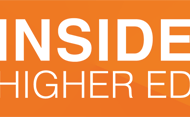The Different Types of Potential Learners and What They Want

Inside Higher Ed
Doug Lederman
July 20, 2022
DENVER—Rare is the college or university that doesn’t need to be thinking about where its future students might come from. Most colleges—be they enrollment-driven four-year colleges that have historically focused on the stagnant or shrinking pipeline of students right out of high school, or community colleges struggling to persuade workers to forgo $18-an-hour jobs for more training—face an uncertain enrollment future.
But it’s one thing for an institution to know in theory that it must identify new pools of prospective students or develop a strategy to meet the growing demand for “lifelong learning”—and quite another to really understand what different kinds of learners want and which groups a particular college is best positioned to serve, in a way that’s consistent with its mission.
One framework for doing so was laid out here at this week’s annual meeting of the National Association of College and University Business Officers. Samantha Fisher, who leads the North American education practice for the business and technology consulting firm Accenture, laid out a new way of thinking about students for a group of administrators responsible for keeping their colleges’ budgets healthy.
Fisher presented the results of a survey of 6,500 learners that Accenture released last fall. The use of the term learners (instead of “students”) isn’t accidental; while more than half of those surveyed are currently enrolled in college degree or certificate programs, the survey included those who were “willing or had recently been paying to get any kind of credential” from any type of education or training provider, Fisher said, including boot camps, corporate providers and the like.
That’s important, because colleges and universities are increasingly competing against not only each other but an ever-broadening array of alternative providers who might offer education or training more affordably, more conveniently or even more effectively.
By including not only students who are currently enrolled at a college or university program but also those who may have dropped out or chosen an alternative, the survey offers insights not only into what choices learners are making but “their levels of satisfaction” with different kinds of educational providers and “what universities might need to do better” to compete for and serve learners, Fisher said. (It should be noted that this analysis excludes some of the many millions of Americans who have opted out of education and training altogether, focusing instead on those likeliest to potentially be interested in a formal program.)
Continue Reading
Share








